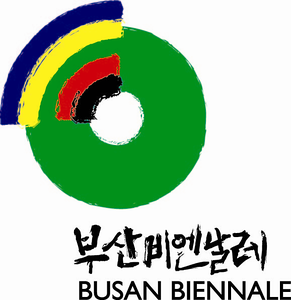September 5–November 8, 2020
The Busan Biennale 2020, a 65-day journey that began on September 5 under the theme Words at an Exhibition–an exhibition in ten chapters and five poems, has ended with no safety issues and rave reviews. Starting with ten novels and five poems by eleven authors which are themed around Busan, this year’s biennale adopted the unique format of inviting visual and sound artists to plan or produce artworks. This marriage of different genres created a virtual layer for Busan in the form of three intertwined exhibition spaces, allowing visitors to explore the city like a detective and view it from a new perspective.
As biennale after biennale was cancelled or postponed due to the COVID-19 pandemic, the organizing committee thought hard about the right decision to take, but they eventually decided that the Biennale should go ahead as intended. This decision was driven by the passion of the executive director and the artistic director, as well as the internal consensus that the Biennale should continue its commitment to trying something new and experimental and that it should present a potential answer to some of the new challenges. The organizing committee communicated online with international artists who were unable to come to South Korea to discuss the entire production process, from artwork selection to actual installation, adding to the difficulties of its staff members. In the face of these uncertainties, the committee had to create scenarios for both online and offline exhibitions and make relevant preparations. In addition to general elements, enhanced content for a potential online event and preparations for limited access to physical exhibition spaces and stringent quarantine measures were crucial in the lead up to the Biennale.
The journey began online. The opening ceremony on September 5 was streamed live on YouTube without any physical audience to help prevent the spread of COVID-19. A total of 6,500 viewers watched as the Danish-born artistic director Jacob Fabricius and executive director Kim Seong-Youn had a direct discussion with the viewers. The size of the online audience was far greater than the average turnout of 400-500 people at physical opening ceremonies, and this was enough to arouse curiosity in the online exhibition, which included a celebratory performance and the behind-the-scenes story of preparations. The largest number of concurrent online visitors was recorded during a tour in which Fabricius introduced artworks and their stories while walking in the streets and around the exhibition venues. This unprecedented move was seen as presenting a new approach to exhibitions.
The key components of the online event included a 3D viewing room and a docent video entitled Detective Jacob. 051, which was a product of the artistic director’s passion and introspection. Unlike that of other institutions, the Biennale’s 3D viewing room was streamed in a high-resolution format and allowed the audience to enjoy the scenery outside the exhibition hall, earning it higher praise.
Visual artworks at the Biennale focused on themes such as political and sociological issues that originate from the history of Busan and their translational exploration, a new interpretation of cities and Busan, an anthropological approach to space, and diverse experimental research into media, which all led to a synesthetic exhibition. The exhibition layout also contributed to the high satisfaction of visitors because it allowed them to fully appreciate the works and their intended messages.
Against the backdrop of a disrupted day-to-day life, this year’s Biennale has received great reviews from the industry for its quality event which encompassed both online and offline exhibitions and which represents efforts to fully embrace the changes caused by the pandemic and open up a new horizon for the post-COVID era. In addition, the artistic community has applauded the Biennale for its agile response to the fast-changing pandemic situation and appropriate preparations for the exhibitions, and for the quality of the online content offered to visitors.

